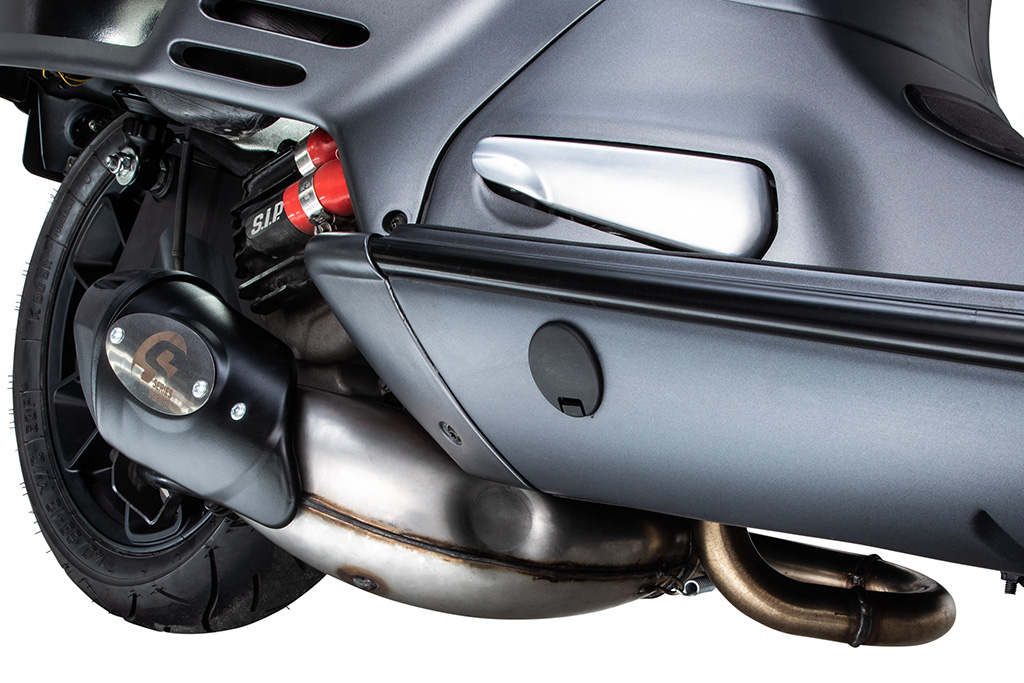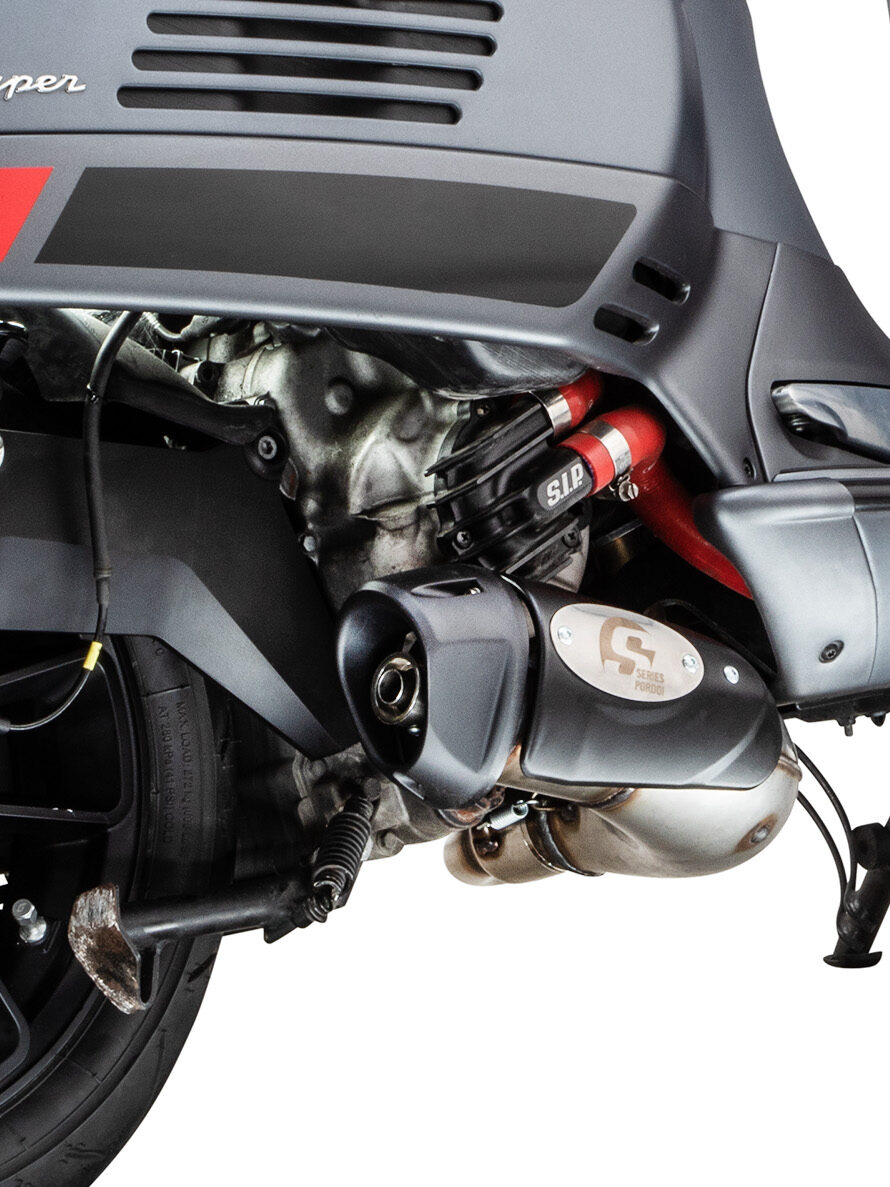Vespa racing exhausts are exhaust systems designed specifically for racing vehicles. They are lighter and offer better performance than conventional exhausts. They come in many different sizes and shapes. Some are more “open”, meaning that the exhaust stream escapes directly into the environment, while others have closed systems where the exhaust gas is directed through a pipe into the exhaust.
Some Vespa racing exhausts also use catalytic converters to reduce pollutant emissions.
SIP Series Pordoi
SIP offers for the Vespa models GTS/GTS Super/GTV/GT 60 125-300cc a series Pordoi exhaust. This exhaust is suitable in the model years 2004-2017. The SIP series Pordoi is characterized by the following features:
- 100 percent independent look
- Hidden installation position below the running board
- Minimal performance increase
- Pleasant sound level
The SIP Series Pordoi exhaust system brings fresh momentum to the market for sports exhausts. It is not only suitable for radical conversions such as the Custom Racer “Pordoi” from SIP Scootershop, but also offers driving pleasure in everyday use.
The new SIP Series Pordoi racing exhaust is an absolute must for all Vespa fans who like it sportier. This model convinces especially with its excellent performance and great sound. But also the optics are impressive: The SIP Series Pordoi racing exhaust is available in different colors and thus fits perfectly to any Vespa. It completely blends in underneath the running board, revealing the view on the right side of the picture. A completely new look that can not be achieved with any other exhaust on the market.
The SIP Series Pordoi is a racing exhaust for Vespas, designed for riders who value power and performance. This exhaust delivers the perfect combination of power and sound and is also suitable for smaller Vespa models thanks to its compact design. SIP Series Pordoi is available in different models, so you can find the perfect exhaust for your vehicle.
Comparing with other models
In this section, we will compare SIP’s racing exhaust with other models to help you make your decision.
First of all, let’s look at the features of the racing exhaust from SIP. This exhaust is made of stainless steel and has a diameter of 38 mm. So it is very robust and durable. Moreover, it has a sporty look that will give your Vespa a special look. Another feature that you should consider when buying an exhaust is the noise level. SIP’s racing exhaust is very quiet, so it can be used in residential areas.
Now let’s take a look at the other designs. A popular design is the Polini exhaust. This exhaust is also made of stainless steel and has a diameter of 38 mm. However, it’s not quite as quiet as SIP’s racing exhaust, so it might be a bit annoying in residential areas.
Another popular design is the Malossi exhaust. This exhaust is also made of stainless steel and has a diameter of 38 mm. However, it is somewhat more expensive than the racing exhaust from SIP and also not quite as quiet.
In summary, SIP’s racing exhaust is a great choice for Vespa riders who value quality and durability. In addition, it is very quiet and can therefore be used in residential areas without you having to worry about the neighbors bothering you.
Assembly of the racing exhaust SIP Series Pordoi
The assembly of the racing exhaust SIP is a very laborious process for inexperienced tinkerers, which can take a lot of time. It is important that you take your time to follow the assembly closely and perform all steps carefully. With the right experience, the rebuild can be as little as 30 minutes. The following points should be noted when assembling the racing exhaust SIP:
- First of all, you need to make sure that the right model is selected for the motorcycle. This is especially important if it is an older model.
- It is important to have the right tools at hand. These include an impact wrench, ratchet, side cutters, pliers, and various nuts and bolts.
- First, the old exhaust must be removed. To do this, the two nuts on the bracket must first be loosened. Then the exhaust can be removed.
- Now the new racing exhaust can be mounted. To do this, the brackets must first be attached to the respective sides. Then the exhaust can be hung up and fastened with the nuts.
- Finally, the exhaust only needs to be attached to the manifolds. To do this, the two nuts must be loosened and then tightened again.



